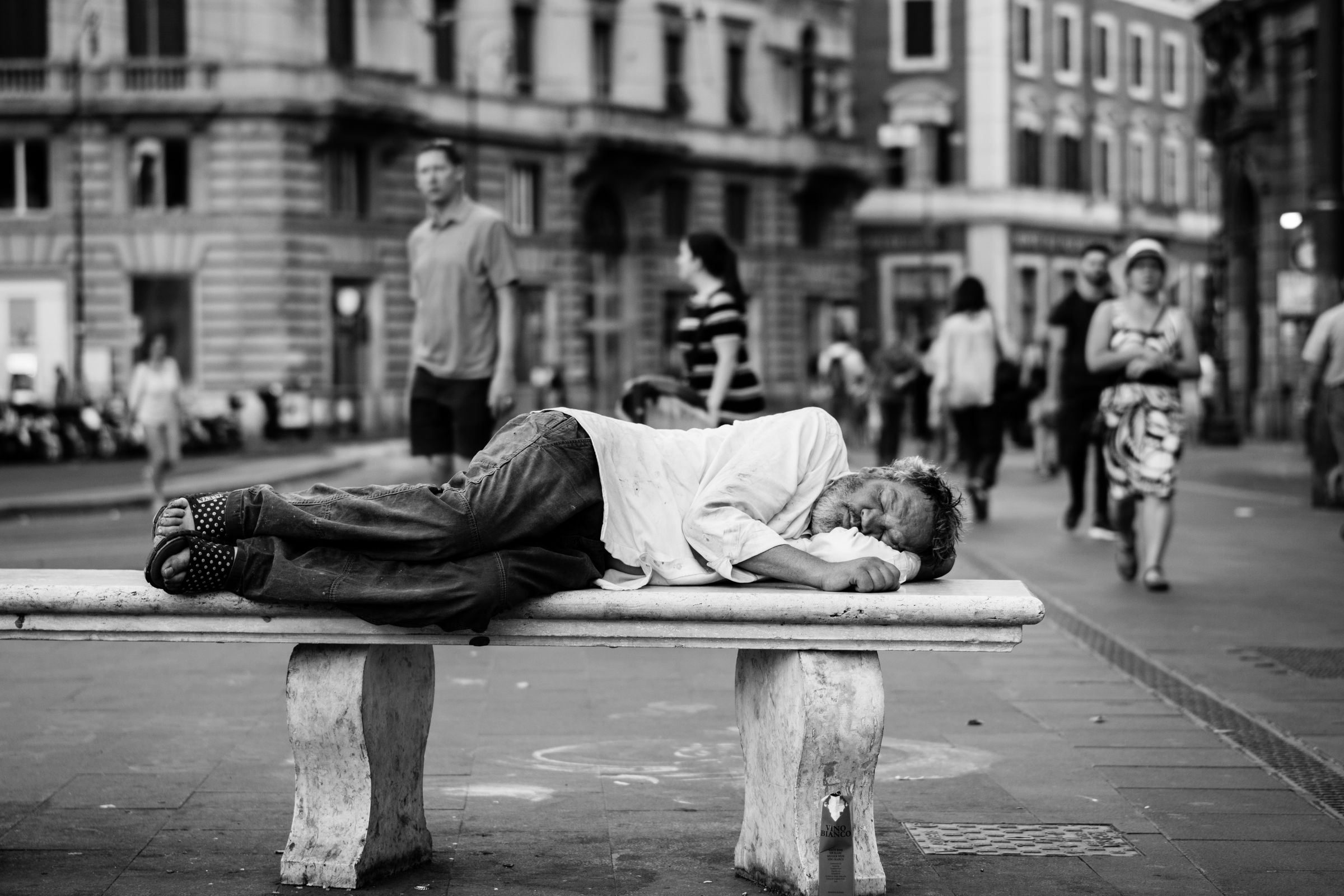Why Your Back Hurts When You Lie Down

Nothing ruins a night of good sleep like lower back pain.
Once again, you’re left to face the day without sleep and with an ache that won’t disappear.
However, there are several ways to relieve lower back pain when lying down at home.
We’ve looked at medical studies and credible sources to ensure all information in this blog is professional-approved. Scroll down to get started.
Understanding Back Pain
Before treating back pain, you must work out what’s causing it. See the most common lower back pain causes below:
Lumbar Sprains & Strains — When the lower back (lumbar) muscles and ligaments are stretched or torn due to sudden injury or gradual overuse (www.aans.org, n.d.)
Bad Sleeping Position — Sleeping with your spine and pelvis twisted can lead to lower back pain while lying down.
Spin Osteoarthritis — Intense lower back pain that develops gradually over time. This condition also restricts motion (Lindsey and Dydyk, 2020).
Degenerative Disc Disease (DDD) — The cause of DDD isn’t yet known, but it’s estimated to be due to trauma, injury, or wear and tear.
Ankylosing Spondylitis — A chronic inflammatory autoimmune disease that affects the spinal joints and causes severe pain (Zhu et al., 2019).
Herniated disc — When the soft centre of a spinal disc ruptures through its outer layer. This causes pain and can occur due to injury or ageing as the spine becomes weaker and less hydrated (Dydyk, Ruben Ngnitewe Massa and Mesfin, 2022)
Scoliosis — A structural condition where the spine forms in a sideways shape that twists or curves to the side by more than 10 degrees (Johns Hopkins Medicine, 2019).
Sciatica — Pain in the sciatic nerve that travels down your lower back and legs. Sciatica can be caused by a herniated disc, tumours, or lumbar stenosis (Koes, van Tulder and Peul, 2007).
Spinal Tumour — A growth or tumour that places pressure on the spine while lying down.
How To Relieve Lower Back Pain At Night
If your lower back pain isn’t severe, you can treat it at home.
Lifestyle changes and preventative measures are vital to relieving non-serious back pain.
1. Yoga - Yoga is as effective as non-pharmacologic treatments in reducing lower back pain (Chang et al., 2016).
2. Pilates & Stretching - Pilates and gentle stretching are other doctor-approved workouts which can lessen back pain while strengthening related muscles.
3. Resistance Training - Weight lifting can also help, but taking this exercise slowly is crucial to avoid any further injury.
4. Diet - Adopting a healthy diet can also help relieve back pain. Research shows that a balanced diet with anti-inflammatory nutrients can reduce chronic non-cancerous pains (Brain et al., 2021). So, ensure vegetables, antioxidants, and fibre are on the menu.
Quick Fixes For Lower Back Pain Caused By Lying Down
1. Mattress & Memory Foam Pillow - Opting for an optimised memory foam pillow or mattress can help to take the stress off pressure points, align your spine, and promote a healthy sleeping position.
2. Knee Pillow - Aligning your spine with a between the knee pillow can also help keep your spine and hips aligned which can take the pressure off your joints and releive lower back pain.
3. Body Pillow - Or you could even try a full-length long body pillow to maintain a healthy spinal posture for ultimate comfort and pain relief.
All of which reduce back pain in the lower and upper regions.
Shop Groove Pillows
Lower Back Pain When Lying Down at Night
If every time you go to bed, you ask yourself, “Why does my lower back hurt when I lie down?” it’s time to get to the bottom of the issue.
Nighttime back pain could be caused by an inappropriate sleeping position, spinal position, mattress or pillow quality, or one of the above causes.
Back pain in bed is often caused by an awkward sleeping position, which leaves your spine twisted and unsupported.
Learning how to sleep properly can make a significant difference in pain levels.
You can also switch from standard bedding to memory foam pillows and mattresses. Memory foam has many benefits, including preventing spinal misalignment and moulding to your body (Ferchak, D. 2021).
This keeps the pressure off your back and promotes a healthier sleeping position.
Shop Groove PillowsWhen To Seek Medical Help
You should worry about lower back pain if it lasts more than two weeks, limits your movement, or stops you from participating in your daily activities (www.dukehealth.org, n.d.)
You should seek urgent medical care if the following symptoms appear:
Intense pain
Fevers
Back pain caused by trauma
Loss of bowel or bladder control
Loss of arm and leg strength
Unexplained weight loss

Final Words
Lower back pain is never pleasant, but with proper medical care, healthy lifestyle changes, and appropriate bedding, you can relieve pain and manage your symptoms.
Remember, if your back pain doesn’t respond to home remedies or persists for over two weeks, it’s time to book a GP appointment.
Say goodbye to lower back pain today. Explore the expert-approved Groove memory foam pillows now.
Shop Groove PillowsReferences
- Brain, K., Burrows, T.L., Bruggink, L., Malfliet, A., Hayes, C., Hodson, F.J. and Collins, C.E. (2021). Diet and Chronic Non-Cancer Pain: The State of the Art and Future Directions. Journal of Clinical Medicine, 10(21), p.5203. doi:https://doi.org/10.3390/jcm10215203.
- Chang, D.G., Holt, J.A., Sklar, M. and Groessl, E.J. (2016). Yoga as a treatment for chronic low back pain: A systematic review of the literature. Journal of orthopedics & rheumatology, [online] 3(1), pp.1–8. Available at: https://www.ncbi.nlm.nih.gov/pmc/articles/PMC4878447/#:~:text=Tilbrook%20et%20al. [Accessed 24 Oct. 2023].
- Dydyk, A.M., Ruben Ngnitewe Massa and Mesfin, F.B. (2022). Disc Herniation. [online] Nih.gov. Available at: https://www.ncbi.nlm.nih.gov/books/NBK441822/#:~:text=The%20most%20common%20cause%20of.
- Ferchak, D. (2021). Choosing the Best Pillow for Neck Pain and Back Pain. [online] Health Central. Available at: https://www.healthcentral.com/condition/back-pain/choosing-best-pillow-neck-pain-back-pain.
- Johns Hopkins Medicine (2019). Scoliosis. [online] Johns Hopkins Medicine Health Library. Available at: https://www.hopkinsmedicine.org/health/conditions-and-diseases/scoliosis.
- Koes, B.W., van Tulder, M.W. and Peul, W.C. (2007). Diagnosis and treatment of sciatica. BMJ, [online] 334(7607), pp.1313–1317. doi:https://doi.org/10.1136/bmj.39223.428495.be.
- Lindsey, T. and Dydyk, A.M. (2020). Spinal Osteoarthritis. [online] PubMed. Available at: https://www.ncbi.nlm.nih.gov/books/NBK553190/.
- Zhu, W., He, X., Cheng, K., Zhang, L., Chen, D., Wang, X., Qiu, G., Cao, X. and Weng, X. (2019). Ankylosing spondylitis: etiology, pathogenesis, and Treatments. Bone Research, 7(1), pp.1–16. doi:https://doi.org/10.1038/s41413-019-0057-8.
- www.aans.org. (n.d.). Low Back Strain and Sprain – Symptoms, Diagnosis and Treatments. [online] Available at: https://www.aans.org/Patients/Neurosurgical-Conditions-and-Treatments/Low-Back-Strain-and-Sprain#:~:text=Lumbar%20muscle%20strain%20is%20caused.
- www.dukehealth.org. (n.d.). When Can a Doctor Help Your Back Pain? | Duke Health. [online] Available at: https://www.dukehealth.org/blog/when-can-doctor-help-your-back-pain#:~:text=If%20your%20back%20pain%20lasts.

